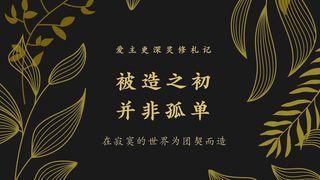Embraced: Five Day Reading Plan预览

The Pineapple Principle
I love fresh-cut pineapple. I love the way it tastes. I love that it has no fat grams. And I love that it can be served at any meal—breakfast, lunch, or dinner—as the perfect, healthy side dish.
The problem with fresh pineapples is that they are slightly complicated. To hold up a fresh pineapple and look upon it longingly can be quite frustrating when you haven’t a clue how to properly cut it open. So, for years I would walk by the fresh pineapples in the grocery store produce section, heave a sigh, and head straight to the canned fruit aisle. The canned version was fine in a pinch but honestly didn’t compare to the fresh. It simply teased my taste buds that greater possibilities existed.
Then one day a friend I was visiting asked me if I’d like a snack. I gasped when she brought out a real pineapple. With ease she turned the fruit on its side and chopped off the top and the bottom. Then she sat it upright on its level end and proceeded to cut sections from each side, starting at the edge of the core. She then shaved off the outer skin, chopped the fruit into bite-sized pieces, and handed me a whole bowlful.
I was amazed. That’s it? That’s all there is to it? You mean for years I’ve missed out on the goodness of fresh pineapples because I couldn’t figure out how to do that?
For years, I took the same approach with studying the Bible as I did with the pineapple. I looked at biblical truth from afar. I didn’t feel equipped to open it and study it on my own. Instead of reading the fresh truth for myself, I only read books that talked about the Bible. Just like that canned pineapple, my experience with learning God’s truth teased me that greater possibilities existed. But since I had no idea how to get them for myself, I avoided the Bible and settled for whatever I could glean from other people.
Then I attended a Bible study in which the teacher modeled how to open up the Bible and study it for ourselves. Each week I watched her dig into Scriptures with a passion and hunger for truth that I’d never known. The way she put verses into context and brought out the meanings from the original text amazed me.
Slowly, I decided to try it for myself. I started getting into God’s Word so it could get into me. I no longer wanted to simply settle for learning facts about the Bible when it was meant for so much more. I wanted God’s Word to interrupt me, change me, and satisfy me. And that meant not only reading and studying the Bible but also developing the habit of living out its message in my everyday life.
The apostle James addresses this in our key verses: “Get rid of all moral filth and the evil that is so prevalent and humbly accept the word planted in you, which can save you. Do not merely listen to the word, and so deceive yourselves. Do what it says” (James 1:21–22).
The more we make a habit of applying God’s Word to our lives, the more it becomes part of our nature—our natural way of acting and reacting. Knowing God’s Word and doing what it says not only helps us while going through heartbreak and trouble, it also brings more satisfaction to our souls than anything else ever could.
Thank You, Lord, for giving us good things to nourish us in body and soul. Help me to dig in to Your Word and let it become part of me. In Jesus’ Name, Amen.
读经计划介绍

The best kind of embrace is when someone who deeply loves us flings their arms wide open and pulls us close. Our hearts were made for this kind of love and security but many of us know more about the pain of heartbreak and fear. In Embraced , bestselling author and speaker Lysa TerKeurst shares her own struggles and doubts while pointing to the Ultimate Embrace: Jesus.
More

